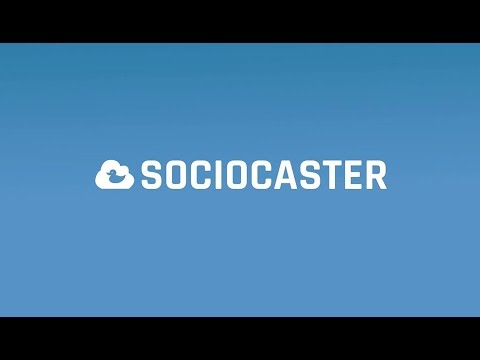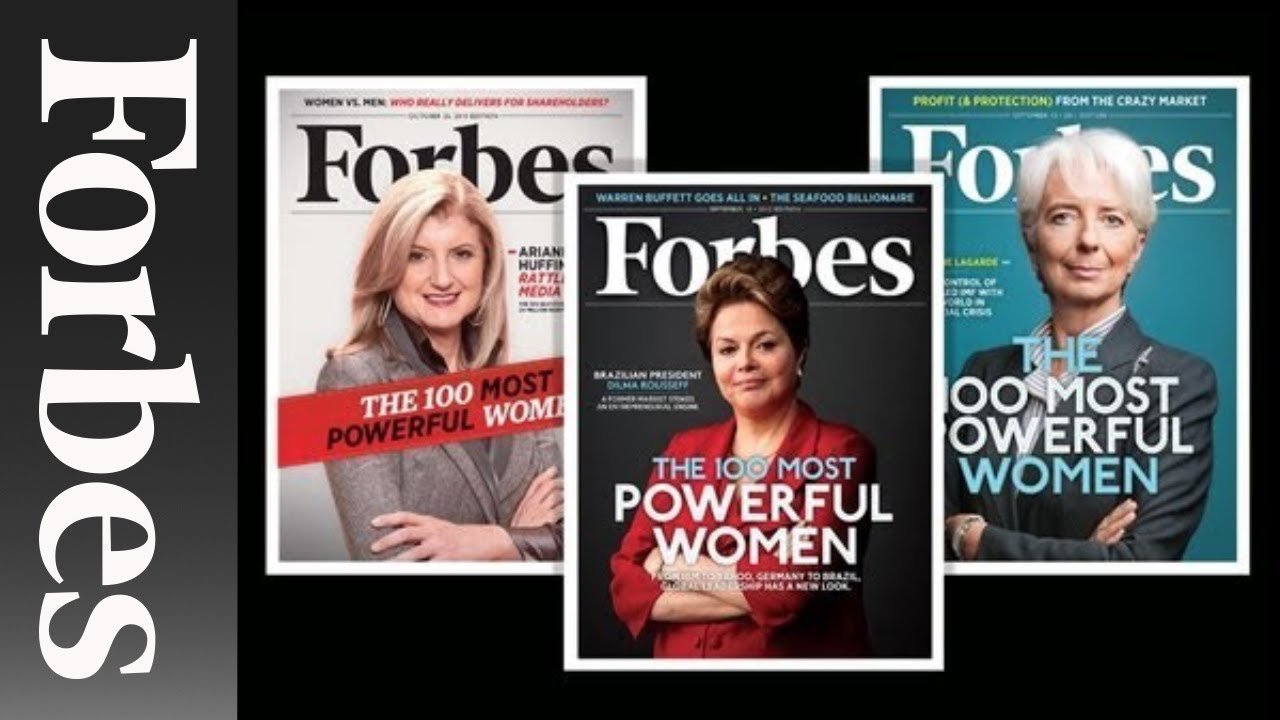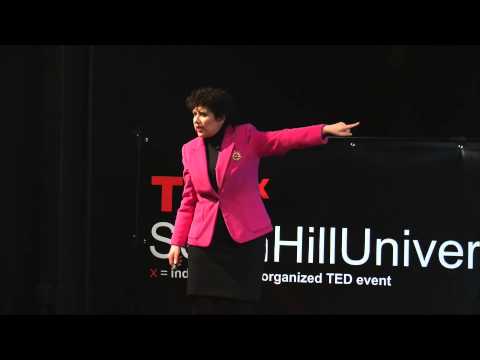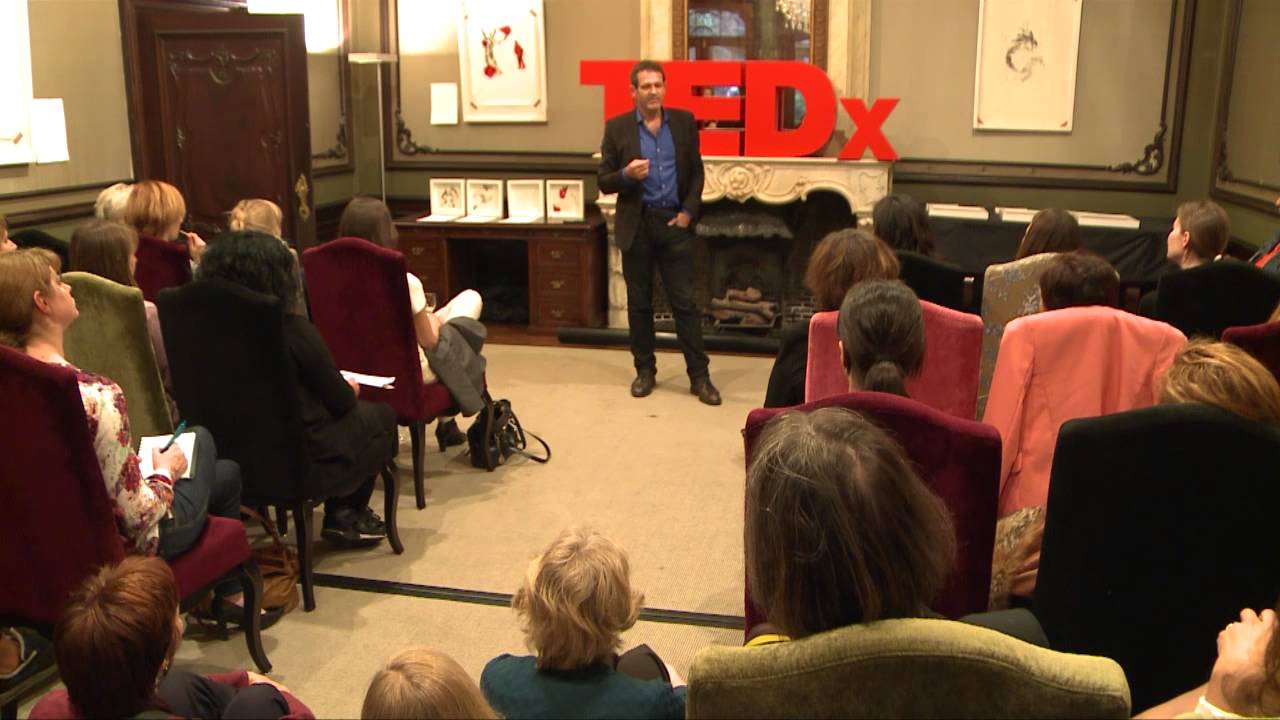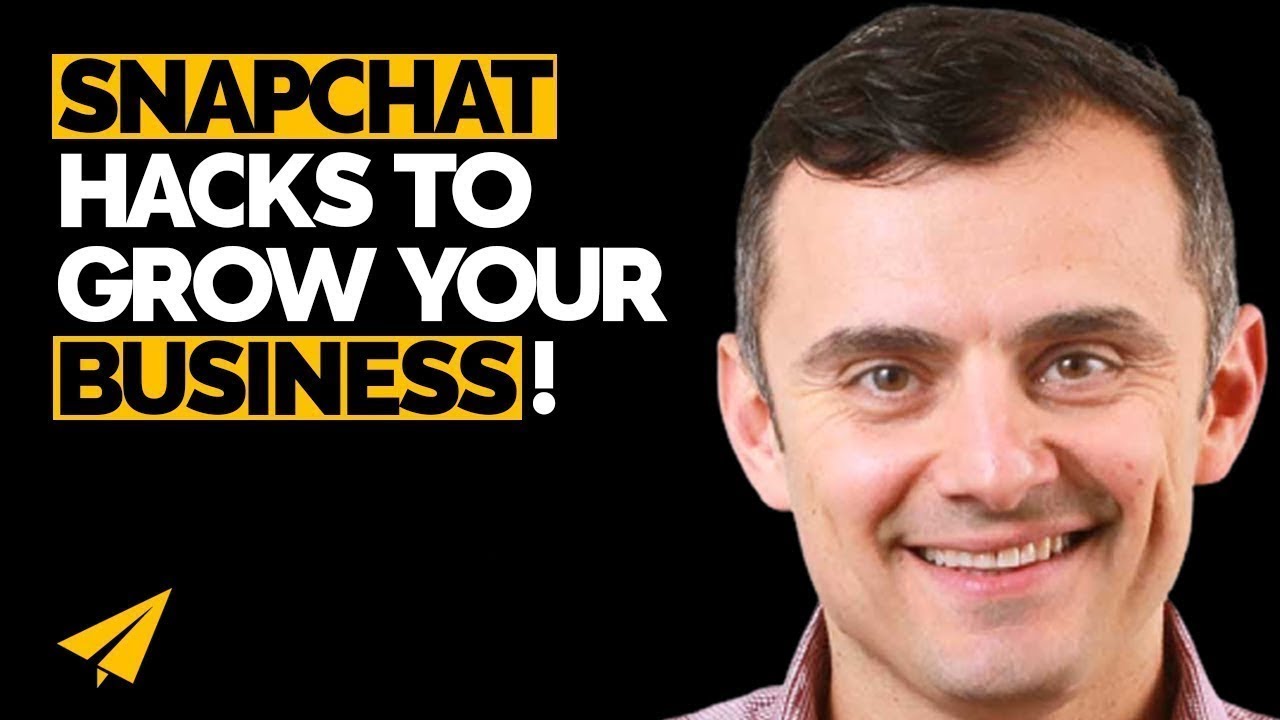Facebook Groups for brands and how they work
A ccording to Facebook more than 100 million people are members of what they call “very meaningful” groups.
“These are groups that upon joining, quickly become the most important part of our social network experience and an important part of our physical support structure. For example, many new parents tell us that joining a parenting group after having a child fits this purpose.”
As such, “Facebook sees groups as an opportunity for the platform to boost engagement and interaction, making The Social Network an even more important part of our interactive process. And there’s a growing range of opportunities for brands in this evolution. You need to tread carefully – you can’t just rush in spamming everyone and everything, everywhere you can, hoping for a good result – but there are ways to utilize Facebook’s renewed Groups focus to further your reach and resonance on the world’s biggest social network,” says Andrew Hutchinson for Social Media Today.
Before the social network boom, online communities and forums were THE spaces that allowed people to interact, collaborate, share content, and learn from each other. “Now maybe Facebook, Twitter, Google+, and dozens of other social networks have stolen a big part of the spotlight, but lately, groups, forums, and online communities are once again regaining their power, and with great force. Why? Because brands are finding it harder and harder to gain exposure and reach their fans and followers on platforms like Facebook. Also, because companies are finally realizing that people today more than ever, seek to satisfy the need for a “sense of belonging,” to express, to learn, and to share,” writes Josefina Casas for Postcron.com.
What offer the groups even more after the recent updates?
The possibility for pages to post into groups
In the past, only individual members were able to post in Groups, but now, you can be logged on as a Page and can comment and interact within a group setting as a direct representative of your business. One of the biggest pluses and benefits is that you can now offer advice, assistance and technical support from your official brand account, which lends more weight to your advice, while also serving as a brand building process in itself.
Still, it’s important to know not to tackle it in the wrong way by becoming to insistent or aggressive. Your audience needs to see you as a consultant and advice bringer, not a psychopath. Offering assistance where possible can be a great way to boost your business.
Having analytics on your side
The recently launched Group Analytics feature, provides a range of key data points to help group admins get a better understanding of their audience, and how to maximize response. Research are data are proving to be as important as ever nowadays, helping the brands remain relevant and offering their target what they need and want. The pieces of relevant information received on members and engagement, and also on the days and times when people are most active within your group, are enabling you to better plan and schedule your content to maximize response. There’s also demographic breakdowns, which can not only help you get a better understanding of your core, engaged target audience within your group, but can also improve your wider market research efforts.
More you can also read here.
Best Pieces of Advice For Women Entrepreneurs in 2017
According to fastcompany.com, women entrepreneurs are the fastest-growing segment of business owners in the U.S. But, compared to male-owned businesses, women-owned businesses generally fail at a higher rate, employ fewer people and generate less revenue. The reasons for the disparity are complicated and varied: difficulty in accessing capital, entrenched social norms, and differences in the industries male- and female-owned businesses tend to cluster are a few of the reasons behind the imbalance.
We are focusing on the positive and are determined to offer you some pieces of advice that we are sure will help you along the way.
Be bold. Be elegant.
One of the many advantages that women have other men in business is their ability to be bold and elegant, at the same time. Of having the courage to say what they think, openly, but beautifully. Their strengths, presented in a very elegant manner, makes them special and powerful. Likewise, loved by their employees.
Build for the high-expectation customer.
Here’s a common trap founders fall into: gain users at any cost. Often, they chase after daily active users, monthly active users and retention numbers. “They believe that appealing to every customer is one way of solving these problems,” says Julie Supan, who has counseled Airbnb, Dropbox and Thumbtack on branding. That’s the wrong approach, Supan cautions. Instead, focus on the high-expectation customer (HXC). She’s your ideal user, “the most discerning person within your target demographic. It’s someone who will acknowledge — and enjoy — your product or service for its greatest benefit,” Supan says. “If your product exceeds her expectations, it can meet everyone else’s.” The HXC serves as a valuable touchstone to ensure that you’re growing in the right direction and to validate — or invalidate — your action plan.
The deeper the context, the better the advice
Advice givers should always reframe questions to orient around the advice seeker, not their own expertise. And, after offering a spread of data points as context, advice seekers should always ask what they should do next.
Invest in people
Your employees are the best power you have after your own and the gem of your business. They will be the ones helping you achieve the success.

There is benefit to failure
Barbara Corcoran, the famous investor from the hit show Shark Tank once said “My best successes came on the heels of failures.” This is a powerful lesson for any aspiring business owner, as most of today’s most established entrepreneurs have been faced with countless failures. The importance of dealing with failure is that you need to be able to learn from the failure, dust yourself off and move on, even if you deal with consistent failure.
Never be afraid to follow your passion
Debbie Fields, the creator of Mrs. Fields, said “what I wanted was to be allowed to do the thing in the world I did best.” This motivated the entrepreneur to follow her passion for cooking, even when others didn’t believe it could turn into the success it is today.
You have to believe in what you are doing
Estee Lauder, founder of the famed makeup brand said “I have never worked a day in my life without selling. If I believe in something, I sell it, and I sell it hard.” Believing in the product and service that you are selling is the first and most important component of being a successful entrepreneur. Without a firm belief in what you are doing, you will never be able to find the success that you deserve, no matter how hard you work. You must believe in the company you have and work relentlessly to sell that idea to the world, making them believe in it as much as you do.
Big achievements are possible
Entrepreneur and iconic mogul Martha Stewart claimed that “it is within everyone’s grasp to be a CEO.” Years of gender bias have left some women not dreaming big enough with their professional aspirations. Stewart’s quote drives the point home in saying that everyone has the ability to earn this type of title, if they are willing to do the work. Dreaming big and visualizing yourself in a big role is one of the best ways to get started on a journey towards being a successful entrepreneur.
Taking risks is important
Lillian Vernon, founder of Lillian Vernon Corporation, once said: “I don’t look at risk the way other people do. When you’re an entrepreneur, you have to go in feeling like you’re going to be successful.” When Vernon started her company she was married and pregnant, and heard from so many people that starting her corporation was a risk, but it was one she was willing to take. Sometimes, a little risk has to be involved if you want to see the big payoff in the end.

Tell a visual story
Melanie Abrantes, designer, believes that the most important thing about selling your product online is to make sure that the images of your product are able to tell the full story. “Since people won’t be able to see it in person, they have to imagine what the product is going to look like in that setting. When you have professional photography involved, you are able to create a life for that product.”
The means don’t justify the end
The author and icon Gloria Steinem considers that the ends do not always justify the means, in business or in life. “In the end, the who you are is much more important than the what you are. And as beings who need social interaction to survive, the value in who you are while getting to where you’re going is everything. The means will always become the ends,” said Steinem, quoted by billboard.com.
Doubt is your biggest enemy
Trust in yourself and you will do just great. Don’t let anyone plant you doubts when your gusts it’s telling you something. Keep positive people around you that will influence you in a great way.
Celebrate every important step and victory
Make sure you embrace everything good that happens in your business. Don’t sell short your victories and try and enjoy each one of them. Success is not easy to come by and all your efforts and dedication deserve the party.
Keep in mind the big picture
Don’t get frustrated easily or become unhappy just because of some small step backs. Remember the big picture, what you want to accomplish, your main goals. They are the real deal.
More pieces of advice you may find here and here.
How To Avoid The Professional Burnout
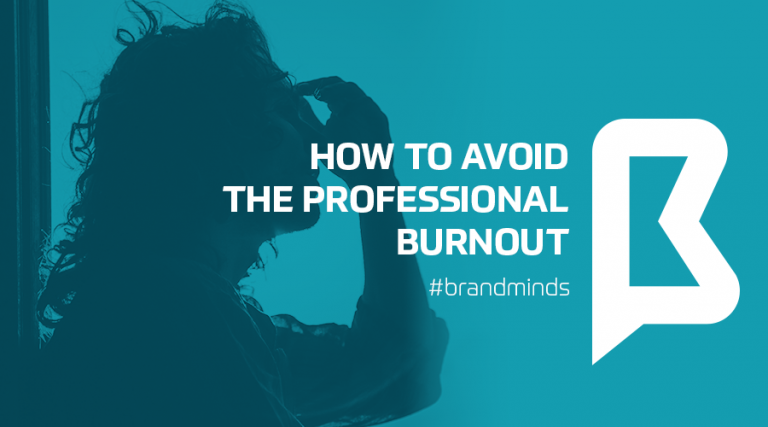
When one is passionate about their job, when one is a high-achiever, one tends to ignore the fact that they’re working exceptionally long hours, taking on exceedingly heavy workloads and putting enormous pressure on themselves to excel—all of which make them ripe for burnout.
According to psychologytoday.com, burnout is a state of chronic stress that leads to: physical and emotional exhaustion, cynicism and detachment, feelings of ineffectiveness and lack of accomplishment. In the state of full-fledged burnout, one is no longer able to function effectively on a personal or professional level. However, burnout doesn’t happen overnight, our bodies and minds do give us warnings, and if you know what to look for, you can recognize it before it’s too late. More about the stages of a burnout and its signs one can read here.

But what can we do to avoid reaching this state? According to Christina Maslach and Michael P. Leiter in their book “The Truth About Burnout: How Organizations Cause Personal Stress and What to Do About It”, when burnout occurs, three things happen: you become chronically exhausted, cynical and detached from your work and you feel increasingly ineffective on the job.
An idea would be to try and be more optimistic and make sure you don’t fall on a pessimistic slide, or, if you have the necessary means, just try a vacation. Realistically speaking though, things are not as easy as they seem, hence the problem creeping out on you and making it quite a big issue.
Pay attention to the voice in your head. When it starts describing negative events as permanent, pervasive or personal, correct yourself. By remembering the 3 P’s (permanence, pervasiveness and personal) and flipping the script, Martin Seligman, author of “Learned Optimism: How to Change Your Mind and Your Life” says you can make yourself more optimistic over time.
Increase your social activity. Spend time with friends, they will bring a balance into your life. As shown by bakadesuyo.com, when the American Medical Association surveyed top doctors to find out how they avoided burnout, one of the key things mentioned was “sharing issues with family and friends.”
Increase your self-efficiency. Paula Davis-Laack, JD, MAPP, an internationally-published writer who travels the globe as a stress and resilience expert, wrote for Psychology Today that self-efficacy is having the belief in your own ability to accomplish (and exercise control over) personally meaningful goals and tasks. People who have a stronger level of perceived self-efficacy experience less stress in challenging situations, and situations in turn become less stressful when people believe they can cope (Albert Bandura, 1989).
Have creative outlets. Burnout interferes with your ability to perform well, increases rigid thinking, and decreases your ability to think accurately, flexibly, and creatively. Even if you aren’t able to flex your creative muscles at work, having some type of creative outlet will keep you engaged and motivated.
Take care of yourself. Make sure you always put yourself first and don’t forget what is important to you and your life. Moreover, pay attention to your health and the outside-work life. Our bodies aren’t machines and one has to remember that things will still be here to be done after taking a much-needed break.
Start saying “no” from time to time. Don’t be afraid to say no. Every “yes” you say adds another thing on your plate and takes more energy away from you.

Get support where you can find it. The number of people who say they have no one with whom they can discuss important matters has nearly tripled in the past two and a half decades. The more depressed or into-work people get, the more they tend not to speak with other people or spend time with others, considering they are always under-time pressure or with a deadline hanging over their head. It’s a state one must make sure he / she doesn’t get stuck into.
According to http://99u.com, to help relieve pressure, schedule daily blocks of downtime to refuel your brain and well-being. It can be anything from meditation to a nap, a walk, or simply turning off the wifi for a while.
Concentrate on positive emotions. Studies show that increasing your diet of positive emotion builds your resilience, creativity and ability to be solution-focused, things that are in short supply if you feel like you’re burning out. I made it a point to start noticing when people did things well (and told them so), and I tried to stop being so hard on myself. Aim for a ratio of positive emotions to negative emotions of at least 3:1, which is the tipping point to start experiencing increased resilience and happiness (Fredrickson, 2009).
Limit your contact with negative people. Hanging out with negative-minded people who do nothing but complain will only drag down your mood and outlook. If you have to work with a negative person, try to limit the amount of time you have to spend together.
Make friends at work. Having strong ties in the workplace can help reduce monotony and counter the effects of burnout. Having friends to chat and joke with during the day can help relieve stress from an unfulfilling or demanding job, improve your job performance, or simply get you through a rough day.
Take time off. If burnout seems inevitable, try to take a complete break from work. Go on vacation, use up your sick days, ask for a temporary leave-of-absence—anything to remove yourself from the situation. Use the time away to recharge your batteries and pursue other burnout recovery steps. Entrepreneurs or freelancers can be especially prone to burnout. Joel Runyon plays “workstation popcorn,” in which he groups tasks by location and then switches, in order to keep work manageable, provide himself frequent breaks, and spend his time efficiently.

Set boundaries. Don’t overextend yourself. Learn how to say “no” to requests on your time. If you find this difficult, remind yourself that saying “no” allows you to say “yes” to the things that you truly want to do.
Nourish your creative side. Creativity is a powerful antidote to burnout. Try something new, start a fun project, or resume a favorite hobby. Choose activities that have nothing to do with work.
Set aside relaxation time. Relaxation techniques such as yoga, meditation, and deep breathing activate the body’s relaxation response, a state of restfulness that is the opposite of the stress response.
Get plenty of sleep. Feeling tired can exacerbate burnout by causing you to think irrationally.
Avoid nicotine. Smoking when you’re feeling stressed may seem calming, but nicotine is a powerful stimulant, leading to higher, not lower, levels of anxiety.
The huge power and potential of Snapchat
Launched in July 2011, by three Stanford University students (Evan Spiegel, Reggie Brown and Bobby Murphy), Snapchat went from being an application created for a University project to one of the biggest social media sensations in the recent years. First launched under the name Picaboo, the app received a re-launch and a rebranding and became the Snapchat that we all know and love.
The social media platform has grown immensely in popularity over the last 4 years and has now become one of the biggest social media platforms of this time. With over 100 million daily users worldwide, the app attracts especially Millennials and youngsters, but also a lot of celebrities. Therefore, the brands are “lining-up” and doing their best to attract the users’ interest and likeability. Moreover, Snapchat has grown as a marketing tool since brands have found it effective for promoting to a younger demographic group that they eagerly want to reach.
Part of the social media platform that attracted the most the users is the fact that people seem to be more genuine on it, even the celebrities, showing real moments of their lives, uncut behind-the-scene snaps, sexy and funny videos. Everyone from models to actresses (to model/actresses, to model/DJs, you get the idea) are daily users (DJ Khaled and Kylie Jenner just might be addicted) and now, some are even using the platform to premiere and share original content. You can find here a list of the celebrities that love the social media platform, you will for sure have the chance to see some of your favorite ones. As of February 2015, more than 60% of 13-to-34-year-olds had the app downloaded on their phone, according to a U.S. Census study on Snapchat’s site, even the White House having an account.
Also, as proved by several studies, more Americans are familiar with Snapchat than with Pinterest or Linkedin (not to mention Tumblr, Vine, etc), having more users than Twitter or Pinterest or Linkedin. In the past 12 months, awareness of Snapchat among Americans 12 and older grew from 60% to 71%, with the platform growing in one year as much as Twitter has in 4 years combined. In the 2013 Infinite Dial study, 15% of Americans said they used Twitter. By 2016 21% of the country claimed Twitter usage. Between 2015 and 2016, Snapchat went from 17% to 23%. Looking at all those figures, it’s no wonder that Snapchat is considered to be USA’s second-favorite social network, with 26% of Americans citing Snapchat as the place they visit most. Instagram is third at 17%, in the Infinite Dial’s 2016 study. First place is still held by Facebook, with 32% saying they use it most. This is a big move in just one year, as the previous edition of The Infinite Dial showed Facebook at 43%, Instagram in second place at 18%, and Snapchat at 15%. Essentially, what has happened is that in 12 months, 10% of the entire nation’s population of social media using 12-24 year-olds moved from Facebook to Snapchat as their platform of choice.
In this context, there is no wonder that, according to Re/code, advertisements and marketing videos on the service alone are seen between 500,000 and a million times a day.
Much of Snapchat’s surge in usage has been attributed to the app’s Stories and Discover features. People are able to connect with new brands and influencers that might have previously been outside their normal spheres of interaction and the stories the people behind those accounts create – visual tales like behind-the-scenes footage or brand messaging, for instance – build instant connections between companies and consumers.
According to Forbes, Snapchat has more than 60 million users in the U.S. and Canada alone. Snapchat was set to rake in about $ 366.7 million in ad money in 2016 and they’re poised to break the $1 billion-mark in 2017. A lot of that money is coming from the full-screen ads strewn across those Stories and Discover sections.
The reason for the huge potential of Snapchat Advertising
Whether you are representing a small, medium or big brand, if you are targeting Millennials and youngsters, you must be on Snapchat. Try and learn from the brands that have already pathed the way for you. Take the best you can, try and innovate and, most of all, be present. If it’s something we’ve all learned through the social media boom is that being up-to-date with the changes and keeping an eye open are two essential factors in the success of the brands. And also, try to do at least a little bit of real-time marketing. Snapchat is the real place for it. The app others the marketers several big reasons for being there:
Frequency: Once a snap disappears it’s time to put up another one – that steady stream of content helps build rapport and frames the brand as reliable and communicative
Approachability: Many brands and personalities have found success posting raw footage that gives audiences a glimpse behind the curtain – from pre-concert footage from musical acts to touring a new pop-up store with a fashion designer, these sneak peeks build interest.
Story-First Focus: Most social platforms run off of “likes” or favorites that advertisers feel driven to accumulate. Snapchat advertising ditches that kind of approval, in favor of more organic storytelling that feels more authentic.
Getting more personal: Closer than ever to your favorite stars. What more can a fan want?
The fun / ironic side of it: We all want to have a good time and be entertained. And Snaptchat sure knows how to do it.
Top traits that make a female a successful entrepreneur
Even in minority when it comes to their numbers, compared to the men who run their own businesses or are top managers, the women possess a series of qualities that make them very suited for the position and, sometimes, even better, than the men, in some fields of activity.
According to a KPMG study, 83 percent of the female entrepreneurs and business owners surveyed think leadership is the most critical trait for a business founder or CEO to possess, while 82 percent think it’s confidence.
“Building a company – and maintaining its success – takes confidence, determination and the ability to take risks. Women entrepreneurs who are able to take these traits and combine them with a strategic vision for their business will not only capitalize on today’s climate of disruption, but they will be the disruptors themselves,” Lee Anne Sciambra, managing partner of KPMG LLP’s New Orleans office and leader of the Houston Business Unit Private Markets Group, said in a statement, quoted by businessnewsdaily.com.
Other qualities that we believe are important are:
Integrity. One doesn’t need to leave victims in her path to be victorious. You don’t need to step on others to step to the next level. Integrity must be the very core of your character. Always put honor first and live by your convictions. As you gain respect and trust, your company will grow. People seek to do business with those they trust.
Perseverance & persistence. They work hand and hand with the power never to give up, no matter how big are the challenges you are confronted with. Women are used to overcoming obstacles everyday, from mentality to perception ones, and tend in general to have a big inner strength. They know how to use the adversity to their advantage.
Being strong–minded & confident in her power. Strong minded doesn’t mean imply being rude, conceited or destructive. On the contrary, a strong-minded woman displays confidence. According to entrepreneur.com, “when you’re strong minded, you’re empowered, possess a healthy self image and take responsibility for your life. The entrepreneurial spirit, by its very nature, requires us to consider possibilities that most aren’t brave enough to”.
Confidence is essential in winning clients and building a profitable business. A person that shows confidence in herself is reliable and wins people’s respect, earns their trust and gains a solid reputation. As first impressions are always really important is essential to show you possess that skill, especially in new business meetings.
Ambition. This is one skill that no person can deny it’s usually equal to “girl power”. Every good leader is known for being really passionate and ambitious about what he / she is doing and showing day feature each time. As Katy Cowan was writing for theguardian,com,“you have to really want something if you’re going to succeed. And you should never settle for second best. Always strive to push forward. Always aim for the top”.
Courage. One cannot start the path of the entrepreneurial road without having at least a portion of courage on the back. Diving into the unknown, facing all the possible problems and difficulties takes a lot of force of character and power. Not everybody can be an entrepreneur, let alone a successful one.
Being determined and focused. Never lose the sight of your business goal. They should be committed your short- and long-term goals to writing, recording how and when you’ll achieve them. Post your goals in plain sight and review them often. Record the reward when the goal is attained. Remember that you can’t hit a mark you can’t see, and continual success demands a plan.
Hard work. Women are famous for putting a lot of work in everything they do, for being perfectionist, both in the professional and personal life. Success cannot be achieved without sacrifices and a lot of time and energy invested. They know it and are not afraid to show it.
Showing compassion. We are not Robots and thank God for that. Emotions make us who we really are and showing your human side is essential if you aspire to being a leader. Moreover, charity and compassion allow you to make a difference in the lives of others, a quality that is more and more searched for today. A woman with a compassionate heart can achieve a great deal of influence and positive image that will help her business thrive.
Inspirational people to watch in 2017
Inspiration is what drives us to be better and better each day, to look up to people that give us the courage to try something new, to discover and push our limits. It’s also one of the talents that few people carry with them, a quality that makes them really special. We chose for you certain persons, from different fields of activity, that we believe represent an inspiration for today and the years to come.

The crown jewel of this graphic designer’s online empire, which also includes her popular lifestyle blog, is Pinterest, where Cho has 12.8 million followers. As the most-followed person on the platform, she’s now able to garner big partnerships, including a photo-documented road trip sponsored by Toyota and new lines of baby clothes and nursery and home décor for Target. Last year she was tapped to design the souvenir eggs for the 2016 White House Easter Egg Roll. As if that weren’t enough, Joy is a best-selling author, has a thriving YouTube channel, consults with leading companies.
More about her you can read here.
Felix Arvid Ulf Kjellberg (a.k.a. PewDiePie)

The Swedish gamer (born Felix Kjellberg) has a record of 42.7 million subscribers on YouTube, giving him a reach bigger than most TV networks. He recently struck a deal with Disney’s Maker Studios to produce original content for RevelMode, a new virtual network. PewDiePie’s net worth has grown steadily since 2010, clearing over $9 million a year since he started posting videos to YouTube.
For proof that a single tweet can change the world, look no further than Sept. 2, when Bouckaert, the Emergencies Director for Human Rights Watch, shared a photo of Alan Kurdi, a 3-year-old Syrian-Kurdish refugee, lying dead on a Turkish beach. Within hours, the image (taken by Turkish photographer Nilüfer Demir from the Dogan News Agency) had gone viral, drawing attention to the human toll of Europe’s migrant crisis—and perhaps even hastening a response. Two days after Bouckaert’s tweet, the U.K. agreed to accept thousands more refugees.

He has testified about war crimes before the United States Senate, the Council of Europe, and at the Yugoslav Tribunal (ICTY) in The Hague, and has written opinion pieces for papers around the world. His work has been profiled in Rolling Stone, The Washington Post, The Stanford Lawyer, and The Santa Barbara Independent Newspaper. Most recently, Bouckaert was awarded an honorary doctorate by the Catholic University of Louvain for his work on human rights.
Engineer, physician, best selling author and brilliant entrepreneur. He’s best known for being the Founder and Executive Chairman of the XPRIZE Foundation (best known for its $10 million Ansari XPRIZE for private spaceflight.) and Singular University (whose mission is to educate leaders to apply exponential technologies to address the biggest challenges we face today).
Dr. Peter H. Diamandis is an international pioneer in the fields of innovation, incentive competitions and commercial space. In 2014 he was named one of “The World’s 50 Greatest Leaders” – by Fortune Magazine. Diamandis is also the Co-Founder and Vice-Chairman of Human Longevity Inc. (HLI), a genomics and cell therapy-based diagnostic and therapeutic company focused on extending the healthy human lifespan. In the field of commercial space, Diamandis is Co-Founder/Co-Chairman of Planetary Resources, a company designing spacecraft to enable the detection and prospecting of asteroid for precious materials. He is also the Co-Founder of Space Adventures and Zero-Gravity Corporation.
Diamandis is the New York Times Bestselling author of Abundance – The Future Is Better Than You Think and BOLD – How to go Big, Create Wealth & Impact the World. He earned an undergraduate degree in Molecular Genetics and a graduate degree in Aerospace Engineering from MIT, and received his M.D. from Harvard Medical School.
He turned his 10k Facebook group into 3M+ members, he’s written 3 New York Times bestselling books and Larry King calls him one of the worlds’ top trainers. He started from scratch after surviving a horrible car crash. As he saw the end near, he realized we’d all be asked 3 questions at the end of our lives. Did we live? Did we love fully? And did we make a difference, did we matter? With those 3 questions he left his corporate job and claimed a path to become a speaker, author, coach and trainer to inspire others with his message to live, love and matter. He now runs a multiple 8 figure business that inspires tens of millions of people on a weekly basis.
Brendon is one of the leading high performance coach and one of the most watched, quoted and followed personal development trainers in history. A Top 100 Most Followed Public Figure on Facebook, over 50,000,000 people watched his videos in the last 12 months and more than 1,000,000 students have completed his online courses and video series, making him “one of the most successful online instructors in history” (Oprah.com) and “the reigning world heavy-weight personal development educator” (Entrepreneur.com).
Forbes crowned him the “Ultimate thinking machine”. Ray Kurzweil is an inventor, futurist, computer scientist, founder of Singularity University, author and director of engineering at Google. He has been described as “the restless genius” by The Wall Street Journal, and “the ultimate thinking machine” by Forbes. Inc. magazine ranked him #8 among entrepreneurs in the United States, calling him the “rightful heir to Thomas Edison,” and PBS selected Ray as one of 16 “revolutionaries who made America,” along with other inventors of the past two centuries. He is considered one of the world’s leading inventors, thinkers, and futurists, with a 30-year track record of accurate predictions.

Kurzweil was the principal inventor of the first CCD flatbed scanner, the first omni-font optical character recognition, the first print-to-speech reading machine for the blind, the first text-to-speech synthesizer, the first music synthesizer capable of recreating the grand piano and other orchestral instruments, and the first commercially marketed large-vocabulary speech recognition.
Sergey Brin
Sergey Brin created Google with Larry Page, the two becoming billionaires as Google developed into the world’s most popular search engine and a media giant. After raising $1 million from family, friends and other investors, the pair launched the company in 1998. Google has since become the world’s most popular search engine, receiving an average of more than a trillion searches a day in 2016. On August 10, 2015, Brin and Page announced that Google and its divisions were being restructured under the umbrella of a new parent company called Alphabet, with Brin and Page serving as Alphabet’s respective president and CEO.
In November 2016, Brin was ranked No. 13 on Forbes‘ “Billionaires” list, and No. 10 among U.S. billionaires who made the list. According to Forbes.com, as of November 2016, Brin’s net worth was $37.9 billion. As director of special projects at Google, Brin shared the company’s day-to-day responsibilities with Page, who served as Google’s CEO, and Eric Schmidt, executive chairman of the company.
Elon Musk became a multimillionaire in his late 20s when he sold his start-up company, Zip2, to a division of Compaq Computers. He achieved more success by founding X.com in 1999, SpaceX in 2002 and Tesla Motors in 2003. Musk made headlines in May 2012, when SpaceX launched a rocket that would send the first commercial vehicle to the International Space Station. He bolstered his portfolio with the purchase of SolarCity in 2016, and cemented his standing as a leader of industry by taking on an advisory role in the early days of President Donald Trump‘s administration.
Angela is assistant dean of the Samberg Institute for Teaching Excellence at Columbia Business School and a former McKinsey consultant. Looking at the investing landscape, she was appalled at the lack of women investing and felt it was limiting the innovation economy. She founded 37 Angels, an angel investment network that trains women to invest in early stage start-ups. The network fund Angela is a sought-after expert on CNBC, Bloomberg TV, and Fox Business Network and is regularly featured in media outlets such as Huffington Post, Forbes, and Fast Company. Entrepreneur Magazine recognized Angela as one of Six Innovative Women to Watch in 2015, and Alley Watch named her as one of 100 NYC Tech Influencers You Need to Know.

Yin Lin, along with co-founder Lisa Wang, is the force behind SheWorx, a global collective of female entrepreneurs with programs in New York, Los Angeles, London, Singapore, and Tel Aviv. SheWorx has been recognized as the leading female entrepreneur event series, having launched in 6 global cities, reached over 20,000 women, and curated 100 dynamic round tables and summits providing women with actionable business strategies and access to top mentors and investors. Previously, she co-founded a design and development agency that consulted early stage startups to build out their brand and technology at their most critical juncture. Clients that have leveraged their expertise have gone on to raise over $ 27M in venture funding. She was an associate Techstars, one of the most selective technology accelerators in the world.

Tanya Menendez started researching the problem of technology’s hurting rural jobs in Oaxaca, Mexico, while at college. Later, working with Matthew Burnett at the Brooklyn Bakery, she came up with the idea of a platform for entrepreneurs who make things. She and Matthew started Makers Row, which helps small manufacturers get the software, community, and production materials they need to keep up with change.
Maker’s Row has industry leading investors like Alexis Ohanian, Joanne Wilson, Comcast Ventures, Index Ventures, Kapor Capital, Expansion Capital and Melo7. To date, Maker’s Row has raised over $2.5M in venture capital. In 2015, Tanya was included in Forbes’ 30 Under 30, and has been named Business Insider’s Coolest People in Tech and one of PopMechanic’s 25 Makers Who Are Reinventing the American Dream.
Based in Houston, Carolyn took a look at the burgeoning numbers of startup accelerator and incubators and saw something magical missing–women. She founded the Circular Board, the world’s first and largest digital accelerator for women entrepreneurs.

She currently is a board member for the Texas A&M Mays College of Business, a member of the Dell Women’s Entrepreneur Network, a United Nations Global Accelerator delegate, and TEDx speaker. Other honors include an American Express Micro to Millions award, Sam Walton Emerging Entrepreneur, and Entrepreneur Magazine 2016 “Woman to Watch.” She has been featured in Entrepreneur, Huffington Post, Fortune, Time, MSNBC and other national publications.
Reshma Shetty, co-founder, Ginkgo Bioworks
Reshma Shetty has raised over $151 million to re-engineer technology through cells. Reshma has been active in synthetic biology for over 10 years and co-organized the first international conference in the field: Synthetic Biology 1.0. In 2008, Forbes magazine named Shetty one of Eight People Inventing the Future and in 2011, Fast Company named her one of 100 Most Creative People in Business. Reshma holds a Ph.D. in Biological Engineering from MIT.
Failure is not the end
We are not used to talk about it, to consider it part of the process, to give it its big importance, to learn from it and understand that it might, or might not, take us to the success. What is sure ids that we mustn’t be afraid of it, try to hide it underneath the carpet and pretend like it never happened. The most successful people in the world lived through it, surpassed it and pushed through. Many entrepreneurs that we know and appreciate nowadays have failed with other previous business or fail daily in more or less important parts of their jobs or activities. Failure makes them stronger, teaches them the values and the importance of appreciating every step of the business track and, more than anything, the success, when and if it comes.
“We all have different definitions of failure, simply because we all have different benchmarks, values, and belief systems. A failure to one person might simply be a great learning experience for someone else. Many of us are afraid of failing, at least some of the time. But fear of failure (also called “atychiphobia”) is when we allow that fear to stop us doing the things that can move us forward to achieve our goals,” believes the team of www.mindtools.com.
The fear of failure may have various causes and goes back, most of the times, in our childhood, just like it happens with most of the things that define our lives and whom we are meant to be. Not having the right support, being undermined or humiliated in childhood, those are some causes that will most definitely carry negative feelings into adulthood.
As the editors of edutopia say, failure is an inevitable part of life, but it’s often accompanied by shame — most people do everything in their power to avoid it. As educational philosopher John Dewey said, a true thinker learns as much from failures as from successes. What if educators worked to take some of the sting (and the stigma) out of failing, and encouraged reflection and revision to build upon the lessons learned? “Perhaps there’s a goldmine of opportunities if we can re-frame failure as a valuable learning experience, an essential step along the path to discovery and innovation,” they added.
“Not talking about it is the worst thing you can do, as it means you’re not helping the rest of the organization learn from it,” said Jill Vialet, who runs the nonprofit Playworks. “It gives [the failure] a power and a weight that’s not only unnecessary, but damaging.” Vialet added, referring to the fact that the people involved in the failure should speak about it openly and work to prevent history from repeating itself.
This idea is already ingrained in the cultures of some for-profit industries. For example, in Silicon Valley, failure is a rite of passage. “If you’re not failing, you’re not considered to be innovating enough. Silicon Valley investors, in turn, regularly reward entrepreneurs’ risk-taking behavior, though they know the venture may fail and they will lose their capital,” it’s shown in an article on opinionator.com. In addition, Jill Vialet of Playworks emphasizes the importance of “failing fast and cheap” (as opposed to slow and expensive). She sets aside a budget for new programs that intentionally have unpredictable outcomes. They limit the scope of these programs, clearly define failure and success at the outset, and decide when to measure the new program’s merits. “It’s about being disciplined and rigorous,” said Vialet, since human nature normally prevents us from recognizing our mistakes while they are occurring, quoted by opinionator.com. A great article on the subject one also can find on guardian.com.
![]()
It all depends on how the organization and the people that run it see failure and its importance in business. Just as some organizations encourage employees to talk about failure in office events that are closed to the public, others publish their failures for the world to see. Engineers Without Borders Canada, which creates engineering solutions to international development problems, publishes a “ failure report” every year alongside its annual report. “I only let the best failures into the report,” said Ashley Good, its editor. The examples that are published, she said, show people who are “taking risks to be innovative.”
Moreover, Good also started a Web site, Admitting Failure, to encourage people working in international development to share their stories of failure. The site includes stories about arriving unprepared to an emergency medical situation in the Middle East, the theft of an expensive and underused water filter, and more.
In addition to nurturing a culture of innovation and reflection, talking about failure helps build a canon of knowledge of what not to do in the future.
Still, change doesn’t come over night and building a culture of openness to failure takes time and consistent effort. In the majority of cases, however, failure in the social change world does not involve as many dollars or stakeholders, and admitting it can have a net positive impact on an organization. Doing so can build institutional knowledge and create a culture where people are more open to taking risks.
Often, valuable insights come only after a failure. Accepting and learning from those insights is key to succeeding in life.
“The ability to grow and keep trying when you don’t succeed — resilience and grit — are key to cultivating a growth mindset, in academics and in life. I like how the business world has coined the term “failing forward” to mean using mistakes as stepping stones along the road towards achieving your goals”, says edutopia.org.
We can choose to see failure as “the end of the world,” or as proof of just how inadequate we are. Or, we can look at failure as the incredible learning experience that it often is. Every time we fail at something, we can choose to look for the lesson we’re meant to learn. These lessons are very important, they’re how we grow, and how we keep from making that same mistake again. Failures stop us only if we let them.
“Maybe failure doesn’t always lead to success but is simply the price of doing the right thing. Or sometimes tragedy strikes for no reason and without any apparent benefit. Maybe success in the broader sense comes in the form of failure itself when success’s definition is no longer limited to our individual lives,” says Anthony Sabarillo for medium.com
Instead of conclusion, we leave you with a very interesting article on lifehack.com, showing you six reasons it’s ok to fail.


